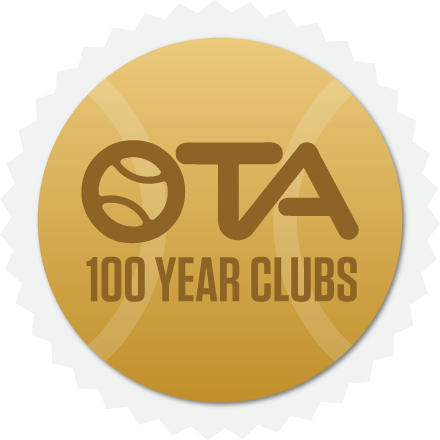

The High Park Club
By Pam Olley
Summer 2018


Summer 2018
2011 saw the High Park Club celebrate its one hundredth birthday. Given that the club is hidden away on Indian Road, a residential street near Roncesvalles Avenue in Toronto’s west end, you may not be familiar with the club’s stern façade, nor with the charming grass tennis courts that are hidden behind the clubhouse and curling rink. But this gem of a club has been around a long time.
In 1910 the High Park Presbyterian Church was opened and it soon became the centre of a new community with Lawn Bowling and Lawn Tennis being played on the Church property and an adjacent lot. At this time the community initiated the creation of a separate social club, with the land for the High Park Club being purchased in 1910 by W.R Prittie, the club’s first president. The building, designed by architects Gemmell and W.R. Gregg, was erected in 1911.
When the club was opened, its lands stretched from Indian Road to Parkside Drive. In the early years, the club offered curling, lawn bowling, skating, indoor baseball, billiards and cards. At first, lawn bowling was the principal sport, with bowlers frequently outnumbering the curlers. Grass courts were built for the tennis section at the Indian Road site, but when the facility was ready for use in the summer of 1912, the tennis section balked at the proposed fees ($3.00). Instead of joining the lawn bowlers at the Indian Road site, the tennis members expanded their use of the church site, using the greens formerly used by the lawn bowlers. The church tennis club disappeared when the space they were utilizing was put to other purposes.
Members relax as they change ends.
With the advent of cheaper city run lawn bowling clubs, the High Park Club’s bowling section slowly faded into history. Many members wanted the club’s greens maintained and as result of the persistence of club members like Bill McDonald, Nick Rumfeldt, and Mark Green,a lawn tennis section was established in 1984. The courts are the only club owned grass courts in Ontario, and depending on grass conditions, there may be one or two grass courts laid out on the grass that once was used for lawn bowling. Membership in the club is sought by players who appreciate the niceties of the grass court game such as the importance of putting spin on the ball, bending the knees in order to make good contact with the low bouncing ball, taking a short backswing to allow a last moment adjustment to an unpredictable bounce or moving to net to avoid the ball bouncing at all. The verandah overlooking the courts is an important part of the club’s charm and its capacity to remind one of a time when tennis was primarily a social game. The friendly chatter, interspersed with some friendly heckling of the players by the spectators, has built a special camaraderie among the members.
Of course not all the players who have played at the High Park Club have been strictly recreational. Several of Canada’s top players have used the courts to tune up their game before traveling to England for the grass court season and Wimbledon. Naturally, the High Park Club celebrates Wimbledon with gusto by holding a mixed doubles tournament and strawberry and cream teas.
Summer 2010 the clubhouse underwent a major renovation, preserving the character of the old building while updating the facilities to better accommodate the members and special functions. The curling section continues to be the most numerous and active group at the club and they have already celebrated the centennial with several bonspiels and the hosting of the Provincial Senior and Mixed Curling Championships. The High Park Club Centennial celebrations continued throughout 2011 with a Golf Tournament, the Wimbledon Mixed Doubles tournament, a weekend of festivities to open the curling season, an Alumni reunion and finally the Centennial Gala on December 15th, exactly one hundred years to the day after the Opening Inaugural Grand Ball in 1911.